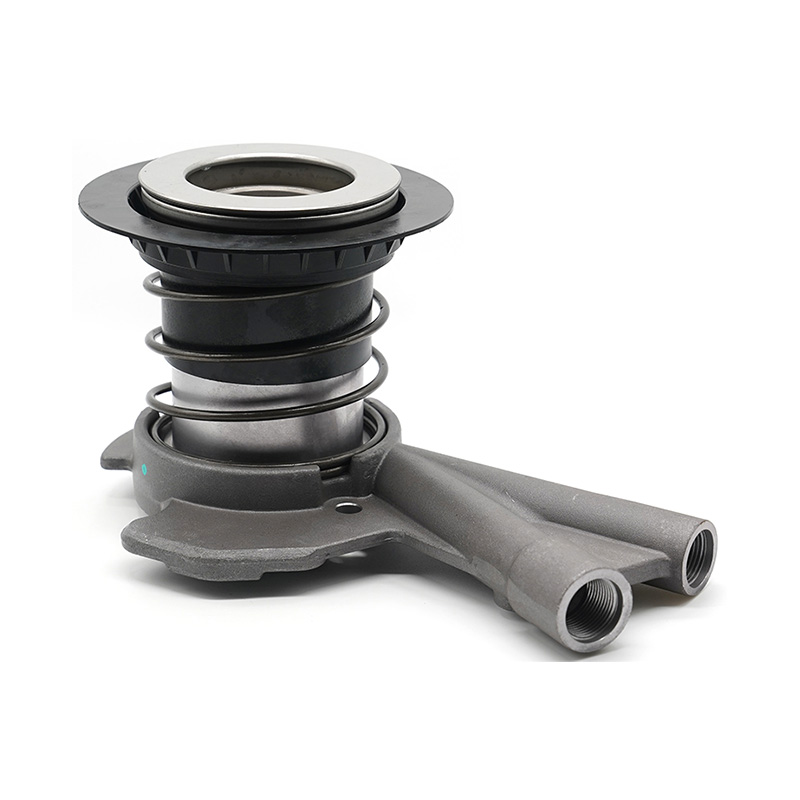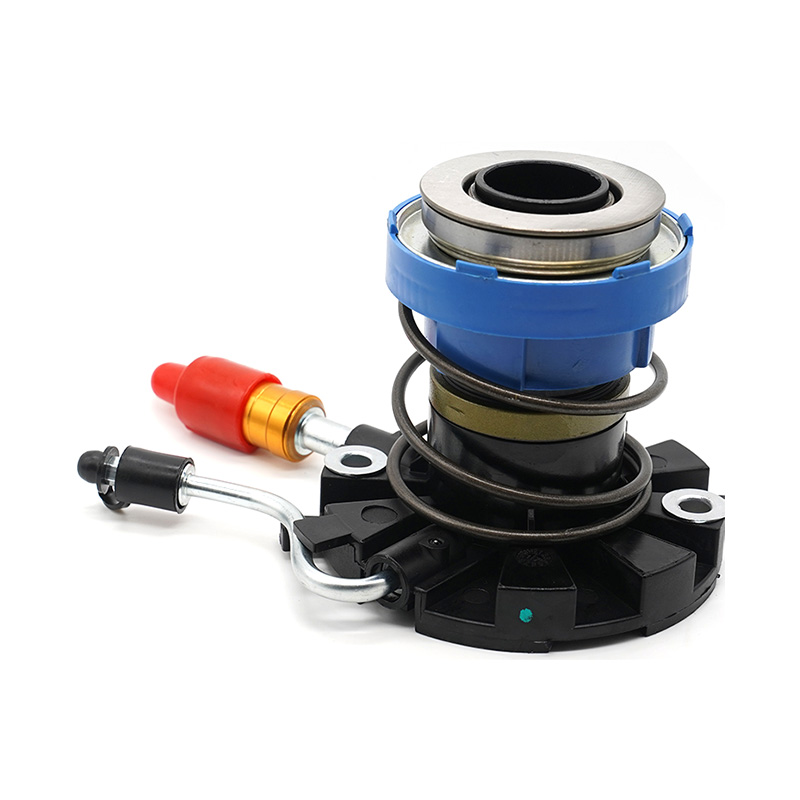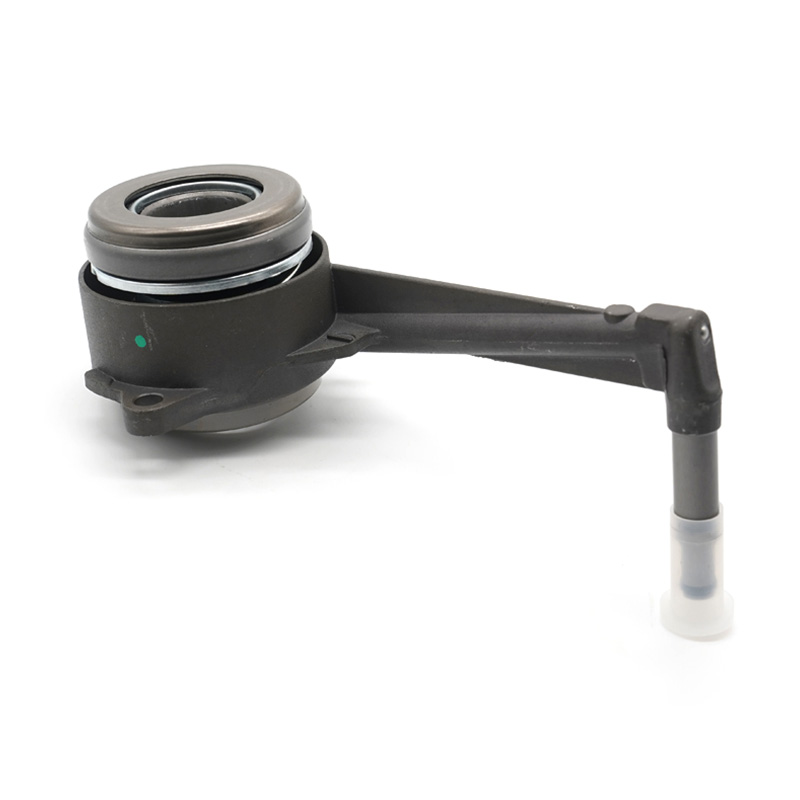As core components of automotive transmission, steering, and braking systems, auto bearings bear radial and axial loads while ensuring smooth rotation of parts like wheels, engines, and gearboxes. Their service life directly relates to vehicle safety, reliability, and maintenance costs. What factors specifically impact...
READ MORE-
-
1.What is Hydraulic Clutch Release Bearing? The hydraulic clutch release bearing, also referred to as a concentric slave cylinder (CSC), represents a significant evolution in clutch actuation technology. This integrated component consolidates the hydraulic slave cylinder and the clutch release bearing into a single, co...
READ MORE -
1.What is Mechanical Clutch Release Bearing A mechanical clutch release bearing, fundamentally, is a specialized bearing unit that functions as the critical interface between the rotating clutch assembly and the stationary actuation mechanism. Unlike a standard radial ball bearing, it is designed to withstand significa...
READ MORE
The hydraulic clutch release bearing is a critical component in modern clutch systems, particularly in vehicles with manual transmissions. It integrates the functions of a release bearing and a hydraulic slave cylinder, enabling efficient disengagement of the clutch through hydraulic pressure.
Concept and Function
A hydraulic clutch release bearing, also known as a concentric slave cylinder, is designed to replace traditional mechanical linkage systems. It operates by utilizing hydraulic fluid to transmit force from the clutch master cylinder to the clutch release mechanism. When the clutch pedal is depressed, hydraulic pressure actuates the bearing, which then moves against the clutch diaphragm spring. This action disengages the clutch plate from the flywheel, allowing for gear changes. The integration of hydraulic components reduces complexity and improves reliability in clutch operation.
Types of Hydraulic Clutch Release Bearings
Hydraulic clutch release bearings are categorized based on design and application requirements. Common types include:
Integrated units: These combine the bearing and slave cylinder into a single assembly, often used in passenger vehicles for compactness.
Modular designs: These allow for separate replacement of components, suitable for heavy-duty applications where durability is prioritized.
Push-type and pull-type variants: These differ in the direction of force application, with push-type bearings applying force away from the transmission and pull-type bearings applying force toward it. Selection depends on the clutch system configuration.
Applications
Hydraulic clutch release bearings are predominantly used in automotive systems, including:
Passenger cars: They provide smooth clutch engagement and reduce pedal effort, enhancing driver comfort.
Commercial vehicles: In trucks and buses, they handle higher loads and offer improved longevity under frequent use.
Industrial machinery: Applications extend to agricultural equipment and construction machinery, where hydraulic systems ensure consistent performance in demanding environments.
The adoption of these bearings is driven by their ability to minimize maintenance and reduce wear compared to mechanical systems.
Comparison with Mechanical Clutch Release Systems
A comparison between hydraulic and mechanical clutch release systems highlights key differences:
Efficiency: Hydraulic systems offer more consistent force transmission with less friction loss, while mechanical systems rely on cables or rods that may require adjustment over time.
Maintenance: Hydraulic bearings typically have fewer moving parts and self-adjusting capabilities, reducing the need for manual interventions. Mechanical systems may need periodic lubrication and cable tension adjustments.
Cost and complexity: Hydraulic systems involve higher initial costs due to additional components like fluid lines and master cylinders, but they often provide longer service life. Mechanical systems are simpler and cheaper to install but may be prone to wear in high-use scenarios.
Environmental factors: Hydraulic systems perform reliably across temperature variations, whereas mechanical components can be affected by corrosion or stretching.
Advantages and Disadvantages
Advantages:
Reduced pedal effort: Hydraulic operation requires less physical force from the driver.
Self-adjusting nature: Compensates for clutch wear automatically, maintaining optimal performance.
Compact design: Ideal for modern vehicles with limited space in the engine compartment.
Disadvantages:
Potential for fluid leaks: Hydraulic systems can develop leaks, leading to clutch failure if not addressed.
Higher repair costs: Replacement often requires specialized tools and knowledge.
Sensitivity to air in the system: Air bubbles can cause spongy pedal feel, necessitating bleeding procedures.
Maintenance and Troubleshooting
Proper maintenance of hydraulic clutch release bearings involves:
Regular inspection of hydraulic fluid levels and quality to prevent contamination.
Checking for leaks in hoses and connections, which can lead to pressure loss.
Bleeding the system to remove air, ensuring firm pedal response.
Common issues include bearing noise, which may indicate wear, or failure to disengage, often due to fluid loss or master cylinder problems. Troubleshooting should follow manufacturer guidelines to avoid misdiagnosis.
Frequently Asked Questions (FAQ)
Q: How does a hydraulic clutch release bearing work?
A: It uses hydraulic pressure from the clutch master cylinder to actuate a piston, which moves the release bearing against the clutch spring, disengaging the clutch.
Q: What are the signs of a failing hydraulic clutch release bearing?
A: Symptoms include difficulty shifting gears, unusual noises during clutch engagement, or a soft clutch pedal. These may indicate wear, fluid leaks, or air in the system.
Q: Can a hydraulic clutch release bearing be repaired, or does it require replacement?
A: Most units are sealed and designed for replacement rather than repair. Attempting to disassemble them can lead to further damage.
Q: How often should the hydraulic fluid be changed?
A: Fluid change intervals vary by vehicle manufacturer, but it is generally recommended during clutch system service or if contamination is suspected.
Q: Is bleeding the hydraulic system necessary after installation?
A: Yes, bleeding removes air and ensures proper hydraulic pressure, which is critical for optimal performance.
As a specialized manufacturer, Xinchang Heyang Auto Parts Co., Ltd. focuses on the production of high-quality Automotive Clutch Release Bearings and a wide range of non-standard bearings, with over 300 product variants tailored for Japanese, Korean, German, American, and other automotive brands. Our products are widely supplied to markets across the Middle East, Iran, Southeast Asia, South America, Europe, and beyond.
 +86-13867573512
+86-13867573512






